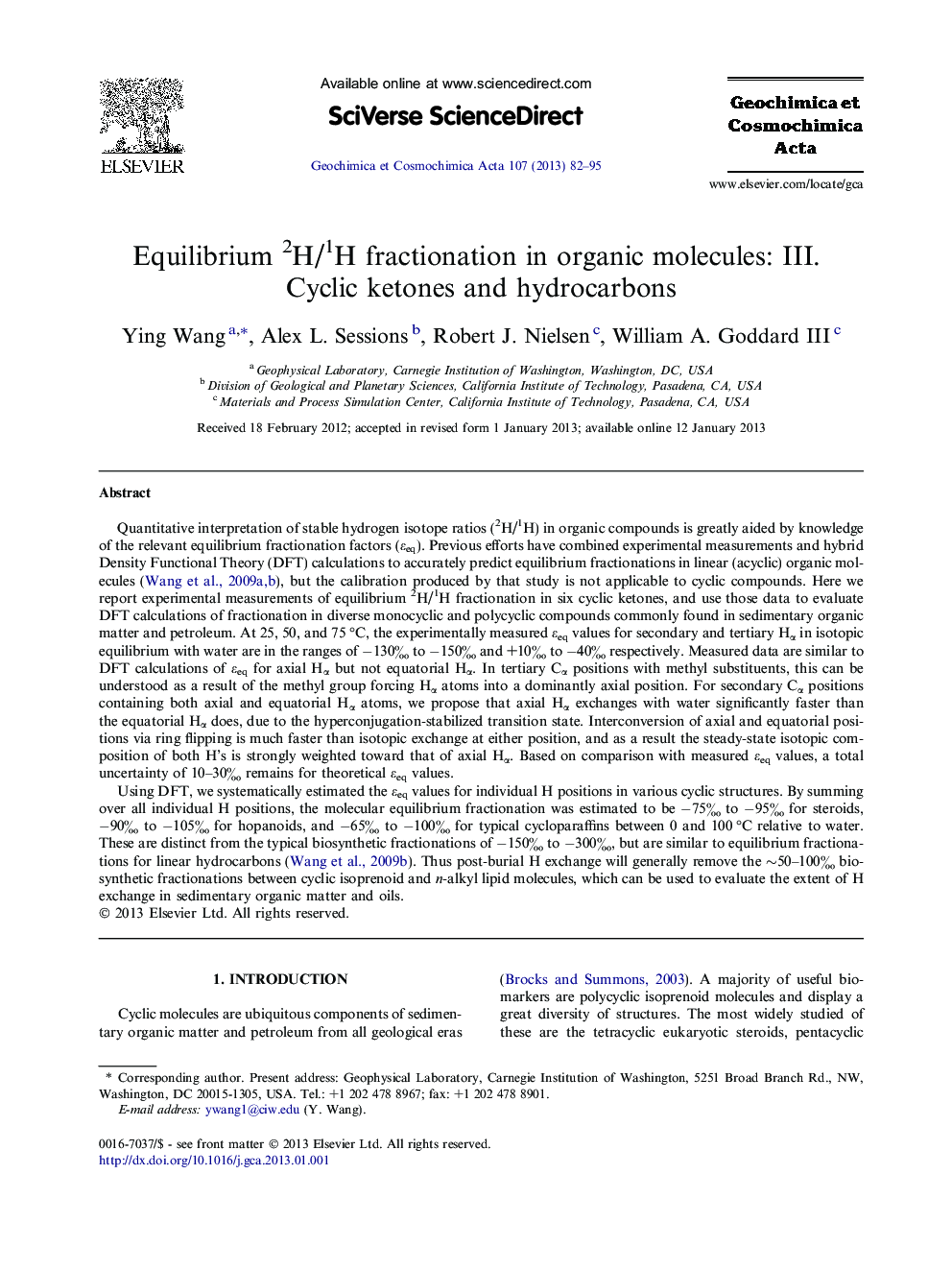| Article ID | Journal | Published Year | Pages | File Type |
|---|---|---|---|---|
| 4702460 | Geochimica et Cosmochimica Acta | 2013 | 14 Pages |
Quantitative interpretation of stable hydrogen isotope ratios (2H/1H) in organic compounds is greatly aided by knowledge of the relevant equilibrium fractionation factors (εeq). Previous efforts have combined experimental measurements and hybrid Density Functional Theory (DFT) calculations to accurately predict equilibrium fractionations in linear (acyclic) organic molecules ( Wang et al., 2009a and Wang et al., 2009b), but the calibration produced by that study is not applicable to cyclic compounds. Here we report experimental measurements of equilibrium 2H/1H fractionation in six cyclic ketones, and use those data to evaluate DFT calculations of fractionation in diverse monocyclic and polycyclic compounds commonly found in sedimentary organic matter and petroleum. At 25, 50, and 75 °C, the experimentally measured εeq values for secondary and tertiary Hα in isotopic equilibrium with water are in the ranges of −130‰ to −150‰ and +10‰ to −40‰ respectively. Measured data are similar to DFT calculations of εeq for axial Hα but not equatorial Hα. In tertiary Cα positions with methyl substituents, this can be understood as a result of the methyl group forcing Hα atoms into a dominantly axial position. For secondary Cα positions containing both axial and equatorial Hα atoms, we propose that axial Hα exchanges with water significantly faster than the equatorial Hα does, due to the hyperconjugation-stabilized transition state. Interconversion of axial and equatorial positions via ring flipping is much faster than isotopic exchange at either position, and as a result the steady-state isotopic composition of both H’s is strongly weighted toward that of axial Hα. Based on comparison with measured εeq values, a total uncertainty of 10–30‰ remains for theoretical εeq values.Using DFT, we systematically estimated the εeq values for individual H positions in various cyclic structures. By summing over all individual H positions, the molecular equilibrium fractionation was estimated to be −75‰ to −95‰ for steroids, −90‰ to −105‰ for hopanoids, and −65‰ to −100‰ for typical cycloparaffins between 0 and 100 °C relative to water. These are distinct from the typical biosynthetic fractionations of −150‰ to −300‰, but are similar to equilibrium fractionations for linear hydrocarbons (Wang et al., 2009b). Thus post-burial H exchange will generally remove the ∼50–100‰ biosynthetic fractionations between cyclic isoprenoid and n-alkyl lipid molecules, which can be used to evaluate the extent of H exchange in sedimentary organic matter and oils.
